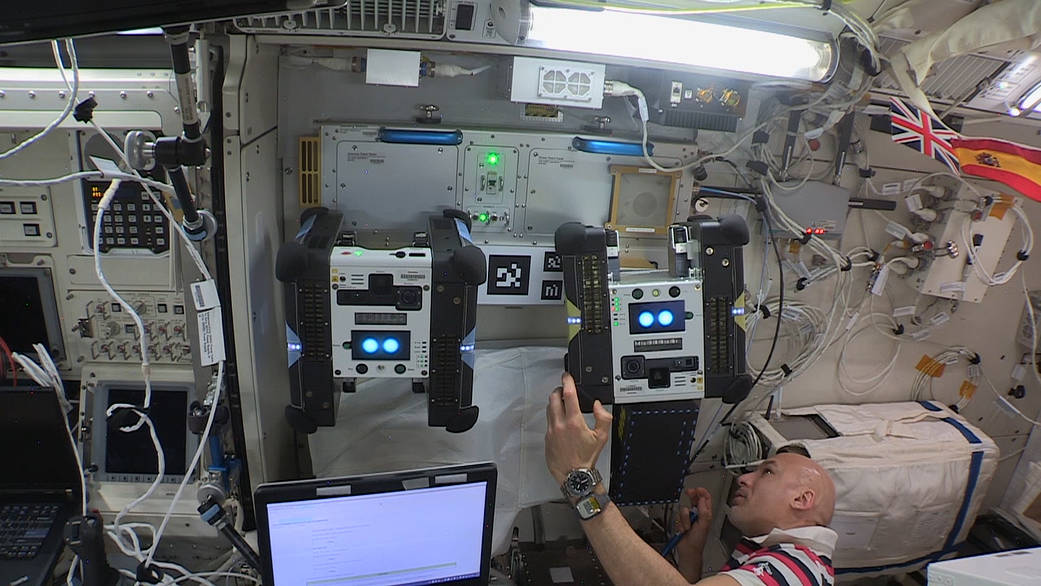European Space Agency astronaut Luca Parmitano performed initial tests of the second Astrobee robot, named Honey, aboard the International Space Station. Astrobee is a free-flying robot system that includes three robots and a docking station for recharging, and will be used to test how robots can assist crew and perform caretaking duties on spacecraft.
After Parmitano unpacked and inspected Honey, he placed the robot on Astrobee’s docking station and Honey woke up on the dock, for the first time in space, next to its robotic teammate Bumble. Honey and Bumble are identical, except for their colors. Bumble is dressed in blue and Honey, appropriately, wears yellow.
Because their systems are identical, Honey can take advantage of the work Bumble has done since its initial hardware checkout in April. Station crew and Astrobee’s team at NASA’s Ames Research Center in California’s Silicon Valley used Bumble to map the interior of the space station’s Kibo module. The robots need a map to navigate, and the series of mapping exercises were a necessary step before Bumble took its first solo flight in June.
Honey received Bumble’s mapping data though a software update from Astrobee engineers using a data port on the dock. Even though the robots now have the same software, Honey needs more testing before it’s ready to fly. The third robot, named Queen, launched to the station in July and will be the last of the three to wake up in space.
Robots like Astrobee will play a significant part in the agency’s mission to return to the Moon under the Artemis program, and other deep space missions, by increasing astronaut productivity and helping maintain spacecraft when astronauts are not aboard.
For news media:
Members of the news media interested in covering this topic should reach out to the NASA Ames newsroom.
Credit: NASA



























